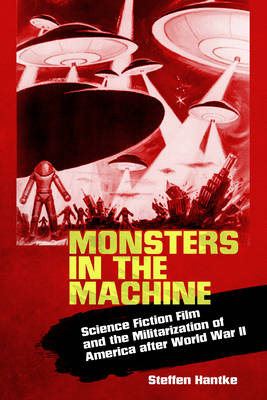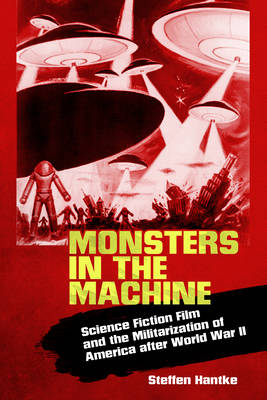
- Afhalen na 1 uur in een winkel met voorraad
- Gratis thuislevering in België vanaf € 30
- Ruim aanbod met 7 miljoen producten
- Afhalen na 1 uur in een winkel met voorraad
- Gratis thuislevering in België vanaf € 30
- Ruim aanbod met 7 miljoen producten
Zoeken
Monsters in the Machine
Science Fiction Film and the Militarization of America After World War II
Steffen Hantke
Hardcover | Engels
€ 186,95
+ 373 punten
Uitvoering
Omschrijving
How science fiction reinvigorated the horror film to express and soothe Cold War fears During the 1950s and early 1960s, the American film industry produced a distinct cycle of films situated on the boundary between horror and science fiction. Using the familiar imagery of science fiction-- from alien invasions to biological mutation and space travel--the vast majority of these films subscribed to the effects and aesthetics of horror film, anticipating the dystopian turn of many science fiction films to come. Departing from projections of American technological awe and optimism, these films often evinced paranoia, unease, fear, shock, and disgust. Not only did these movies address technophobia and its psychological, social, and cultural corollaries; they also returned persistently to the military as a source of character, setting, and conflict. Commensurate with a state of perpetual mobilization, the US military comes across as an inescapable presence in American life. Regardless of their genre, Steffen Hantke argues that these films have long been understood as allegories of the Cold War. They register anxieties about two major issues of the time: atomic technologies, especially the testing and use of nuclear weapons, as well as communist aggression and/or subversion. Setting out to question, expand, and correct this critical argument, Hantke follows shifts and adjustments prompted by recent scholarly work into the technological, political, and social history of America in the 1950s. Based on this revised historical understanding, science fiction films appear in a new light as they reflect on the troubled memories of World War II, the emergence of the military-industrial complex, the postwar rewriting of the American landscape, and the relative insignificance of catastrophic nuclear war compared to America's involvement in postcolonial conflicts around the globe. Steffen Hantke, Seoul, South Korea, has written on contemporary literature, film, and culture. He is author of Conspiracy and Paranoia in Contemporary Literature, as well as editor of Horror: Creating and Marketing Fear and American Horror Film: The Genre at the Turn of the Millennium, both published by University Press of Mississippi.
Specificaties
Betrokkenen
- Auteur(s):
- Uitgeverij:
Inhoud
- Aantal bladzijden:
- 240
- Taal:
- Engels
Eigenschappen
- Productcode (EAN):
- 9781496805652
- Verschijningsdatum:
- 1/07/2016
- Uitvoering:
- Hardcover
- Formaat:
- Genaaid
- Afmetingen:
- 152 mm x 229 mm
- Gewicht:
- 526 g

Alleen bij Standaard Boekhandel
+ 373 punten op je klantenkaart van Standaard Boekhandel
Beoordelingen
We publiceren alleen reviews die voldoen aan de voorwaarden voor reviews. Bekijk onze voorwaarden voor reviews.








